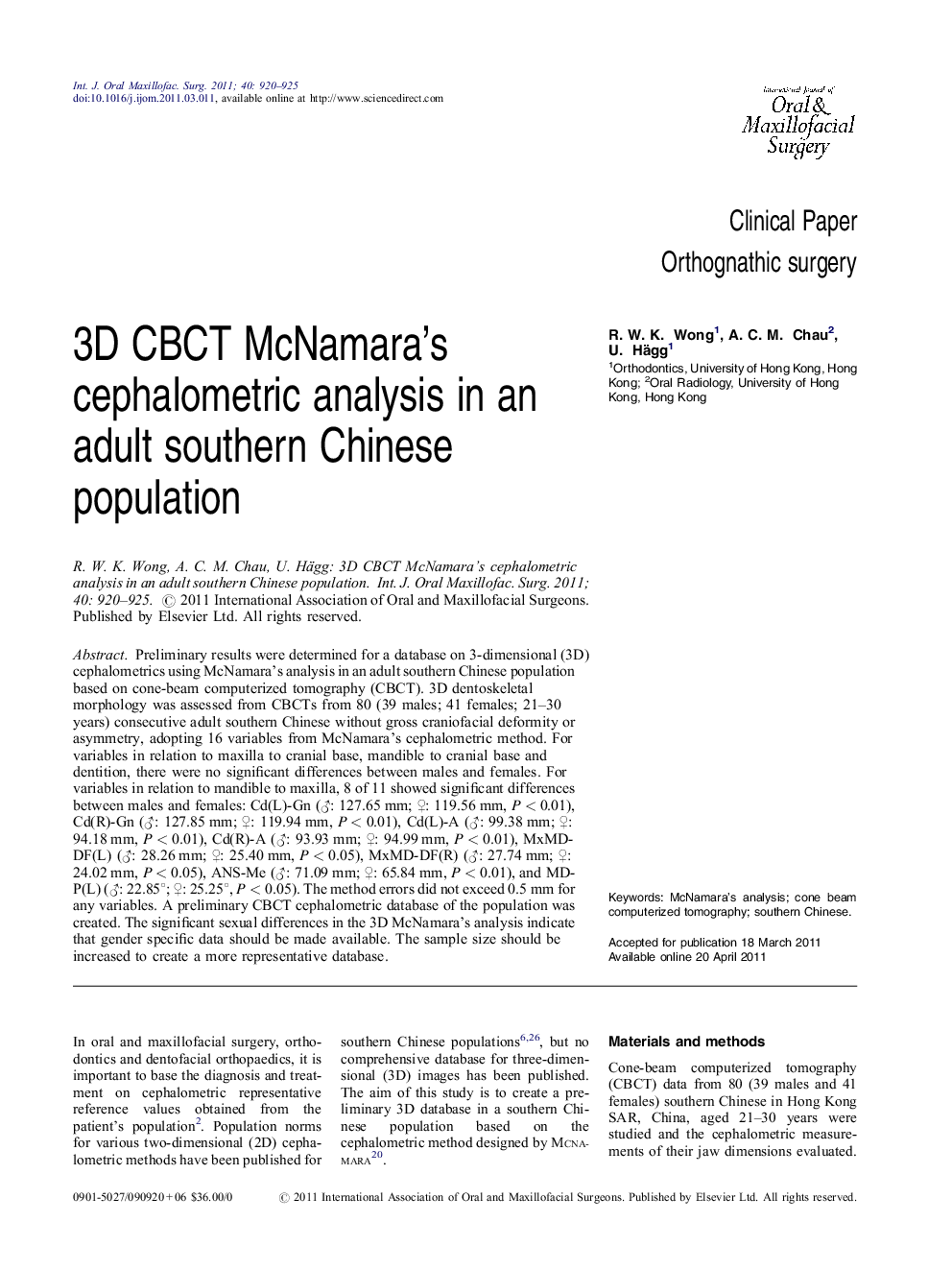| Article ID | Journal | Published Year | Pages | File Type |
|---|---|---|---|---|
| 3133787 | International Journal of Oral and Maxillofacial Surgery | 2011 | 6 Pages |
Preliminary results were determined for a database on 3-dimensional (3D) cephalometrics using McNamara's analysis in an adult southern Chinese population based on cone-beam computerized tomography (CBCT). 3D dentoskeletal morphology was assessed from CBCTs from 80 (39 males; 41 females; 21–30 years) consecutive adult southern Chinese without gross craniofacial deformity or asymmetry, adopting 16 variables from McNamara's cephalometric method. For variables in relation to maxilla to cranial base, mandible to cranial base and dentition, there were no significant differences between males and females. For variables in relation to mandible to maxilla, 8 of 11 showed significant differences between males and females: Cd(L)-Gn (♂: 127.65 mm; ♀: 119.56 mm, P < 0.01), Cd(R)-Gn (♂: 127.85 mm; ♀: 119.94 mm, P < 0.01), Cd(L)-A (♂: 99.38 mm; ♀: 94.18 mm, P < 0.01), Cd(R)-A (♂: 93.93 mm; ♀: 94.99 mm, P < 0.01), MxMD-DF(L) (♂: 28.26 mm; ♀: 25.40 mm, P < 0.05), MxMD-DF(R) (♂: 27.74 mm; ♀: 24.02 mm, P < 0.05), ANS-Me (♂: 71.09 mm; ♀: 65.84 mm, P < 0.01), and MD-P(L) (♂: 22.85°; ♀: 25.25°, P < 0.05). The method errors did not exceed 0.5 mm for any variables. A preliminary CBCT cephalometric database of the population was created. The significant sexual differences in the 3D McNamara's analysis indicate that gender specific data should be made available. The sample size should be increased to create a more representative database.
